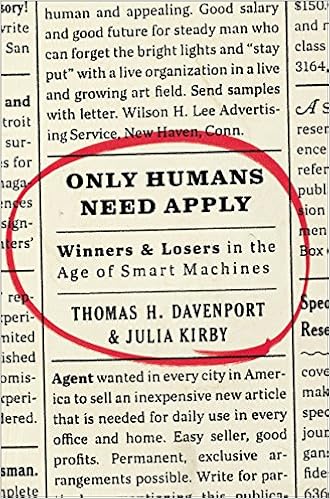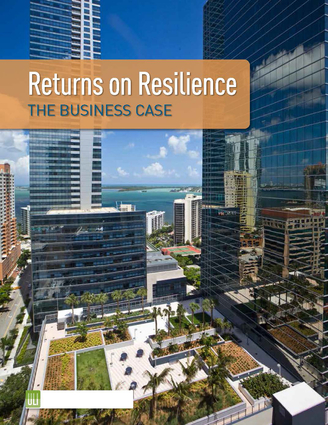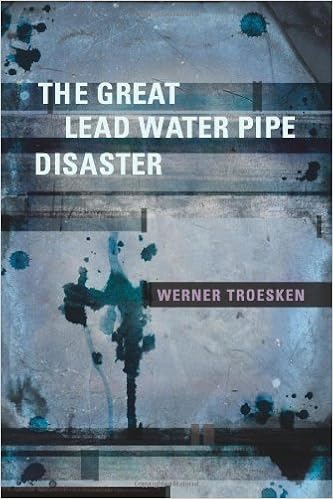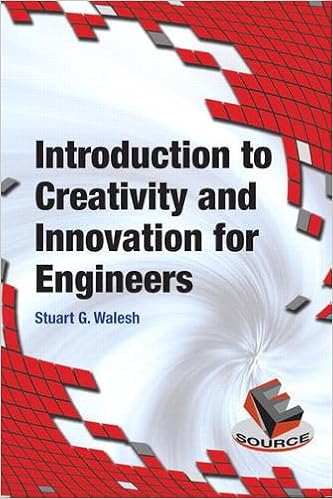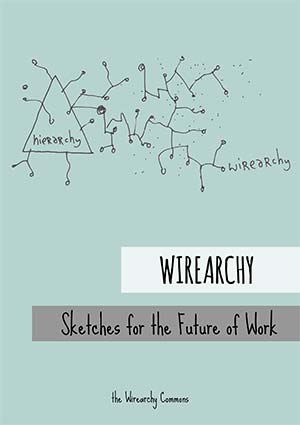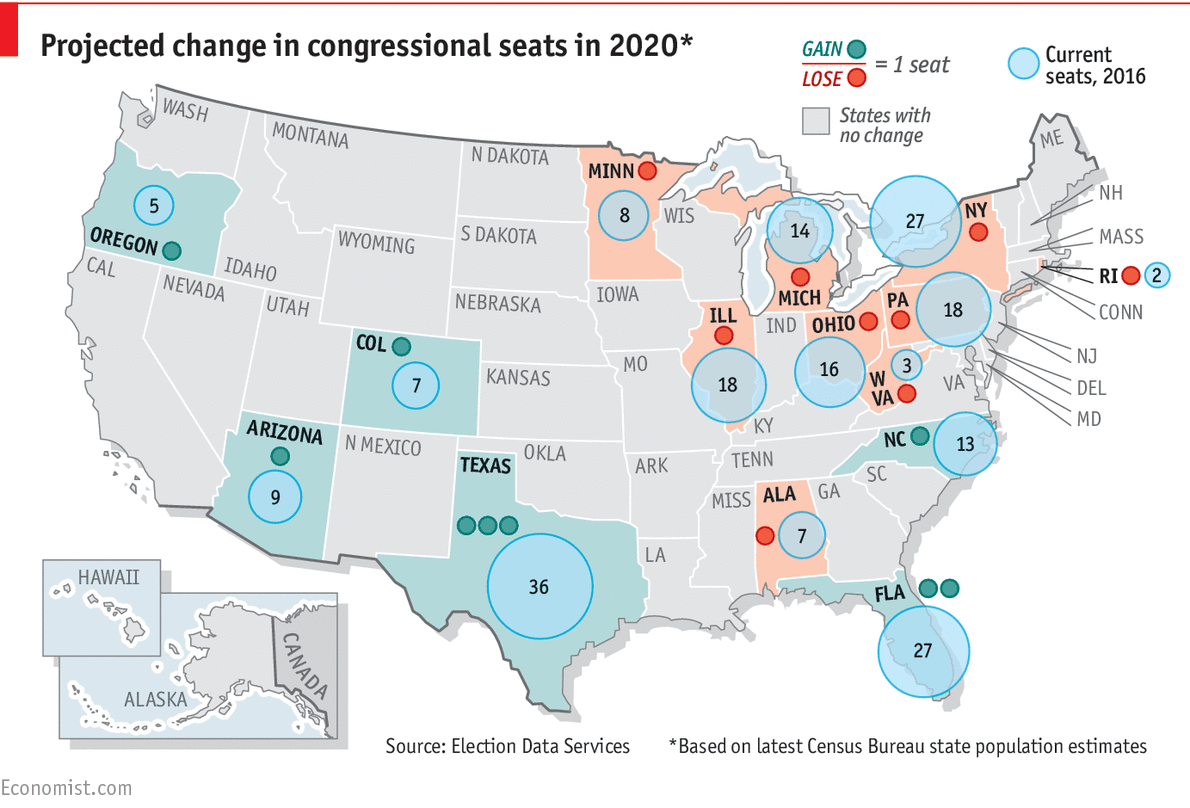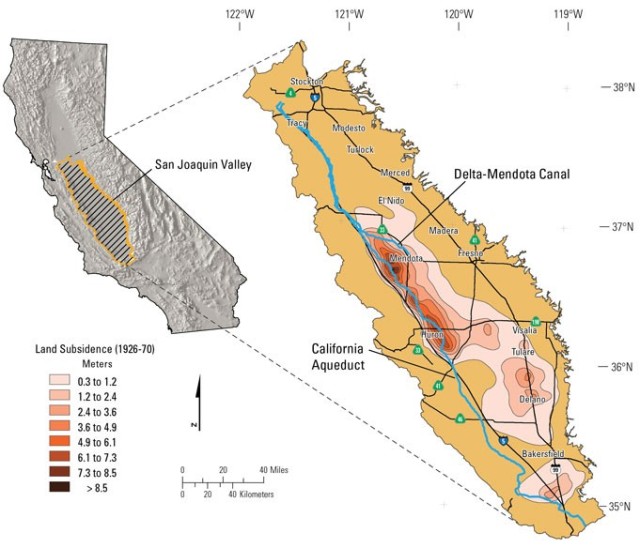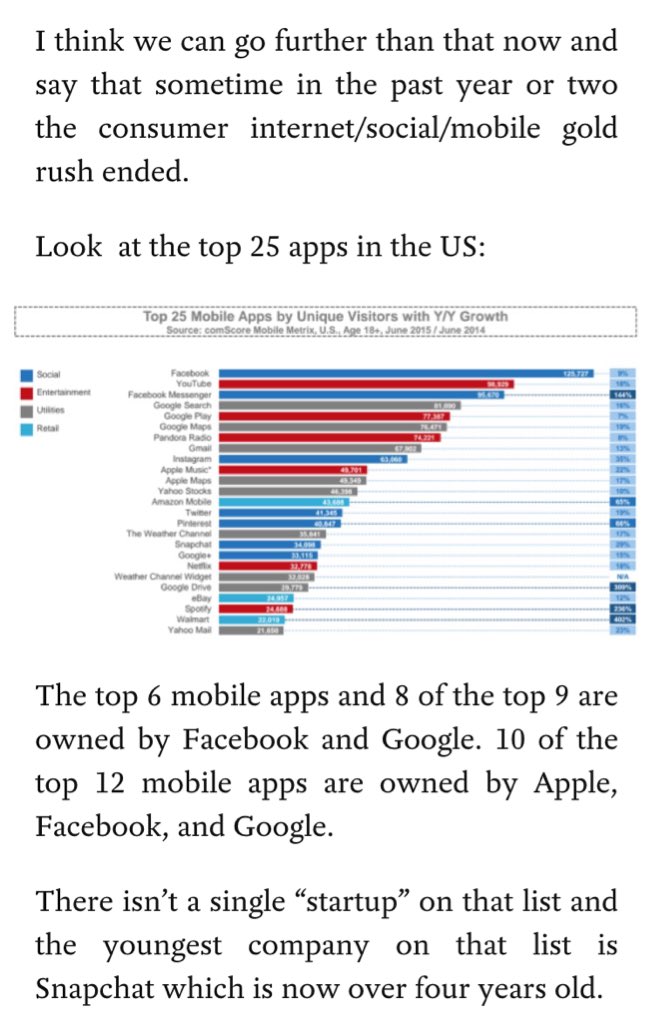
Sunday, January 31, 2016
New Civil Engineer
Major trial for 'low carbon concrete': A utility company has used a cement-free form of concrete in a construc... https://t.co/vzst0pTQ2B
— New Civil Engineer (@ncedigital) January 29, 2016
Engineers in the Age of Decadence
From the Douthat column in the NYT - Trump, Sanders and the Revolt Against Decadence:
"But don’t just think about the word in moral or aesthetic terms. Think of it as a useful way of describing a society that’s wealthy, powerful, technologically proficient — and yet seemingly unable to advance in the way that its citizens once took for granted. A society where people have fewer children and hold diminished expectations for the future, where institutions don’t work particularly well but can’t seem to be effectively reformed, where growth is slow and technological progress disappoints. A society that fights to a stalemate in its foreign wars, even as domestic debates repeat themselves without any resolution. A society disillusioned with existing religions and ideologies, but lacking new sources of meaning to take their place."
"But don’t just think about the word in moral or aesthetic terms. Think of it as a useful way of describing a society that’s wealthy, powerful, technologically proficient — and yet seemingly unable to advance in the way that its citizens once took for granted. A society where people have fewer children and hold diminished expectations for the future, where institutions don’t work particularly well but can’t seem to be effectively reformed, where growth is slow and technological progress disappoints. A society that fights to a stalemate in its foreign wars, even as domestic debates repeat themselves without any resolution. A society disillusioned with existing religions and ideologies, but lacking new sources of meaning to take their place."
Ground-Based GPS
NASA and the U.S. Air Force Test a New Ground-Based GPS https://t.co/dB4Tto4dgG #science
— Dr.Steven D.Sanders (@DocEngineering) January 31, 2016
Top College Professors - Why No Engineering Professors?
The 25 best college professors in America https://t.co/JjxUqt68ME via @bi_university
— Dr.Steven D.Sanders (@DocEngineering) January 31, 2016
Mott MacDonald Talks Infrastructure Resiliency
From Ian Allison - Global Head of climate resilience:
"The increasing severity and frequency of acute (short term) weather events as well as worsening chronic (long term) climate impacts such as sea level and temperature rises will expose these vulnerabilities. The effects will not be restricted to the developing world, but will also be experienced in the advanced economies where service systems are becoming ever-more complex, integrated and inter-reliant. Running in parallel will be huge investment in global infrastructure to serve all these population trends as well as a constant expectation of a better quality of life. Extrapolating this forward a couple of decades and current trends indicate that losses due to climate impacts will reach a global cost of US$1trn a year."
"The increasing severity and frequency of acute (short term) weather events as well as worsening chronic (long term) climate impacts such as sea level and temperature rises will expose these vulnerabilities. The effects will not be restricted to the developing world, but will also be experienced in the advanced economies where service systems are becoming ever-more complex, integrated and inter-reliant. Running in parallel will be huge investment in global infrastructure to serve all these population trends as well as a constant expectation of a better quality of life. Extrapolating this forward a couple of decades and current trends indicate that losses due to climate impacts will reach a global cost of US$1trn a year."
Engineering and the Importance of Why
From the Dallas Morning News today by Aline Lara Rezende - Now, Empathy Wins:
"This change appears on a recent McKinsey & Co. report titled, "Building a Design-Drive Culture." McKinsey says a key difference with design-driven companies is that they're not just trying to understand what customers want but also why."
Asking the question "Why" five times is important. Asking "Why" is the least taught skill to future engineers. Engineering needs to augment results-oriented design approaches with more human-centered design. This means engineers will need to get in touch with their inner cultural anthropologists.
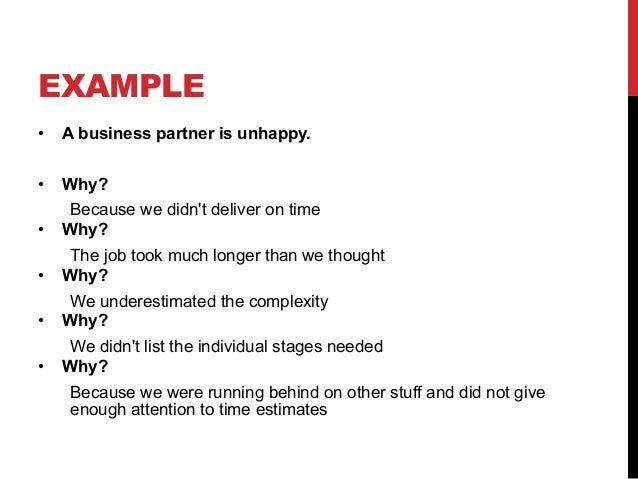
"This change appears on a recent McKinsey & Co. report titled, "Building a Design-Drive Culture." McKinsey says a key difference with design-driven companies is that they're not just trying to understand what customers want but also why."
Asking the question "Why" five times is important. Asking "Why" is the least taught skill to future engineers. Engineering needs to augment results-oriented design approaches with more human-centered design. This means engineers will need to get in touch with their inner cultural anthropologists.

10 Conundrums of Engineering and Economics
From the excellent The Only Game in Town by Mohameda El-Erian - the 10 challenges to the engineering/economics/political/social space:
- Repeatedly inadequate and unbalanced economic expansion, reflecting cyclical/secular/structural headwinds, highlights the extent to which many advanced economies still lack proper growth models.
- Unemployment remains to high in far too many advanced countries; and it is getting more deeply embedded in the structure of these economies and, therefore, will become that much harder to solve.
- Fueled by an unusual combination of cyclical, secular, and structural factors, the worsening of income and wealth inequality has been so pronounced within countries that it now also undermines opportunities.
- The loss of institutional credibility is part of a more generalized erosion of trust in politicians and the "system" as a whole.
- National political dysfunction is still a headwind to overcoming economic malaise and restoring genuine and durable financial stability.
- As national dysfunctions undermines global policy coordination, traditional core/periphery relations fail and geopolitical tensions escalate.
- With systemic risks migrating from banks to nonbanks, and morphining in the process, regulators are again challenged to get ahead of future problems.
- When the market paradigm changes, as it inevitably will, the desire to reposition portfolios will far exceed what the system can accommodate in an orderly fashion.
- Yet none of these uncertainties and fluidities seemed to disturb financial markets that, operating with unusually low volatility, went from one record to another. As such, the contrasting gap between financial risk taking (high) and economic risk taking (low) has never been so wide.
- All of this adds up to considerable headwinds for the better-managed part of national, regional, and global systems.
Oil Math that both J.R. Ewing and Michael Lewis Would Love
From the current issue of Bloomberg Businessweek regarding the winners and losers in the global oil bust:
"During the boom years, some shale producers spent $2 drilling for every $1 earned selling oil and gas, according to data compiled by Bloomberg, and they plugged the shortfall with debt. Wall Street extended low-interest credit lines to junk-rated borrowers, which put up their oil and gas properties as collateral. Producers tapped their bank lines to buy properties and drill wells. When companies needed to pay off their loans, their bankers helped them sell equity and debt. Investors, hungry for higher returns after years of low interest rates, snapped it all up."

"During the boom years, some shale producers spent $2 drilling for every $1 earned selling oil and gas, according to data compiled by Bloomberg, and they plugged the shortfall with debt. Wall Street extended low-interest credit lines to junk-rated borrowers, which put up their oil and gas properties as collateral. Producers tapped their bank lines to buy properties and drill wells. When companies needed to pay off their loans, their bankers helped them sell equity and debt. Investors, hungry for higher returns after years of low interest rates, snapped it all up."

Saturday, January 30, 2016
The Importance of Planning & Design Charrettes
Arup | Thoughts | How charrettes help city planning https://t.co/YpLzwpPkmq
— Dr.Steven D.Sanders (@DocEngineering) January 30, 2016
Friday, January 29, 2016
A Paragraph to Ponder
From NewGeography - The Digitally Connected City:
"Google’s catalytic spark has created a groundswell of public/private interest in boosting the gigabit landscape of cities and regions. A prime example of this is in Longmont, Colorado which has created an experimental laboratory of sorts around what they have coined the GigaBit City. Called NextLight, this venture is a plan to deliver warp-speed broadband to local residents and business. Seen as an economic development game-changer for this city of nearly 90,000, located about 45 minutes northwest of Denver, it is scheduled to be available by 2016. And the monthly price, which is reported to be around $49, is destined to raise some eyebrows among intrigued city planners. Viewed as a quasi-public utility, the ultimate goal of the city is to provide the fastest-speed at the most affordable price of any city in the nation."
"Google’s catalytic spark has created a groundswell of public/private interest in boosting the gigabit landscape of cities and regions. A prime example of this is in Longmont, Colorado which has created an experimental laboratory of sorts around what they have coined the GigaBit City. Called NextLight, this venture is a plan to deliver warp-speed broadband to local residents and business. Seen as an economic development game-changer for this city of nearly 90,000, located about 45 minutes northwest of Denver, it is scheduled to be available by 2016. And the monthly price, which is reported to be around $49, is destined to raise some eyebrows among intrigued city planners. Viewed as a quasi-public utility, the ultimate goal of the city is to provide the fastest-speed at the most affordable price of any city in the nation."
The March of Technological Disruption
3-D printing takes shape https://t.co/hjuABHcDHg via @sharethis
— Dr.Steven D.Sanders (@DocEngineering) January 29, 2016
Starting Future Engineers Out With Art Lessons
From Medium - The Art School Solution:
"It’s inherently human to want the objects in our lives to communicate feelings and ideas to us and about us. The constant searching for and assignment of meaning dwells in everyone, but the artist is the person who exercises this muscle regularly enough to control it. The person with creative literacy — a basic understanding of the mental, emotional, and sociological tools used for creative thought and communication — is able to find purpose and apply meaning to her world rather than having meaning handed down and purpose assigned to her. The painting student completes his senior thesis exhibit with a head full of many more lessons than just how to paint. He’s now equipped with an ability to see problems, connections, and solutions where others see only a blank surface. I assure you this ability is not limited to the canvas."


The Gentilly Resilience District
Gentilly Resiliency District goes against flow of how New Orleans handles stormwater https://t.co/YZb7eLOIse
— Dr.Steven D.Sanders (@DocEngineering) January 30, 2016
There Is Never Enough Time
"Why Every Organization Needs a Chief of Staff Like This One" by @StanMcChrystal on @LinkedIn https://t.co/KXmWiK4ud6
— Dr.Steven D.Sanders (@DocEngineering) January 28, 2016
Podcast on Customer Centricity
Customer Centricity With Wharton's Dr. Peter Fader https://t.co/2LhWa9ANHm via @po_st
— Dr.Steven D.Sanders (@DocEngineering) January 28, 2016
Thursday, January 28, 2016
Update on China's Construction
Is China's slowdown really so hard to understand? https://t.co/EHvRIUDqs2 via @andrewbatson
— Dr.Steven D.Sanders (@DocEngineering) January 28, 2016
Live from Honolulu: HART Rail, a Megaproject Failure in the Making
Link to the NewGeography story which I highly recommend - - Live from Honolulu: HART Rail, a Megaproject Failure in the Making
Wednesday, January 27, 2016
STEM Educators and Soviet Pay
From Alex Tabarrok in Launching the Innovation Renaissance:
"…teacher pay in the United States seems more like something from Soviet-era Russia than 21st century America. Wages for teachers are low, egalitarian and not based on performance. We pay phys ed teachers about the same as math teachers despite the fact that math teachers have greater opportunities elsewhere in the economy. As a result, we have lots of excellent phys ed teachers but not nearly enough excellent math teachers…. Soviet style pay practices helped to eventually collapse the Soviet system and the same thing is happening in American education. Michelle Rhee is no longer the DC Chancellor but IMPACT, the teacher evaluation system developed under her tenure, is in place. IMPACT uses student scores to evaluate teachers but also five yearly in-class evaluations, three from the school administrator and two from master educators from outside the school. Evaluations are meant not only to reward but also to discover and spread best teaching practices."
"…teacher pay in the United States seems more like something from Soviet-era Russia than 21st century America. Wages for teachers are low, egalitarian and not based on performance. We pay phys ed teachers about the same as math teachers despite the fact that math teachers have greater opportunities elsewhere in the economy. As a result, we have lots of excellent phys ed teachers but not nearly enough excellent math teachers…. Soviet style pay practices helped to eventually collapse the Soviet system and the same thing is happening in American education. Michelle Rhee is no longer the DC Chancellor but IMPACT, the teacher evaluation system developed under her tenure, is in place. IMPACT uses student scores to evaluate teachers but also five yearly in-class evaluations, three from the school administrator and two from master educators from outside the school. Evaluations are meant not only to reward but also to discover and spread best teaching practices."
Engineers as The New Elites - The Losers are in Revolt Against the Elites
Historically engineering was the most middle-class of the professions. It was a way to instantly move into the middle-class. If dad worked at the Ford plant and you liked working on your car, someone probably pointed you in the direction of mechanical engineering at your state university. Over a 40-year career you earned and enjoyed an above average middle-class lifestyle. Your children probably thought about engineering or medicine as a career. Engineering got more of society from lower class to middle-class faster than any other professional path.
The middle-class has drastically shrunk in the last 20-years. Dad no longer works at the Ford plant. Mom might have been a part time secretary - but who has a secretary in 2016. Globalization and technology have reduced many of the middle-class foundations that produced families that produced engineers. If dad is an investment banker or runs a hedge fund, the odds of you becoming a mechanical engineer and going to State U is pretty slim. Far too many social, cultural, and economic forces in play to allow that to happen.
The bottom line is that engineers are not members of the middle-class because we really don't have a middle. They certainly aren't in the lower salary or net worth quartiles. So if you are not at the bottom and we have no middle, then by default, engineering and engineers have become part of elite society. As society got more complex and more technical, engineers have entered a sort of technical aristocracy - - it is very hard to look at a Google or Facebook engineer and not come to that conclusion. In a world marked by epochal economic challenges and the growth of a political insurgency around the democratic world, you have to admit we are going pretty well.
Engineers are the elite masters of an unusually uncertain world. Your B.S. in electrical engineering from State U with that MBA from Stanford has produced an important quality - you maneuver around a world of low growth/low inflation/low investment better than most because of your optionality, resilience, and agility. This is no gimme putt, but engineers are helping to create solution spaces on a global scale. The other elites are in need of engineers who can work at the intersection of feasibility, viability, and desirability in a world wanting cheaper, faster, and better on a daily basis. The elites need other elites to get more productivity out of every existing asset using technology. The Internet has produced a global data-discovery game - information is now being generated and utilized at an ever increasing rate of accelerated pace. The elites cannot hire enough DOPes (date oriented peoples). Engineers make excellent DOPes.
Which brings me to the excellent Martin Wolf column in the Financial Times today - The Losers are in Revolt Against the Elites. This article is excellent and will be much quoted. It should be must reading for the members of the elite class. From the article:
"In the process, elites have become detached from domestic loyalties and concerns, forming instead a global super-elite. It is not hard to see why ordinary people, notably native-born men, are alienated. They are losers, at least relatively; they do not share equally in the gains. They feel used and abused. After the financial crisis and slow recovery in standards of living, they see elites as incompetent and predatory. The surprise is not that many are angry but that so many are not."
"
The middle-class has drastically shrunk in the last 20-years. Dad no longer works at the Ford plant. Mom might have been a part time secretary - but who has a secretary in 2016. Globalization and technology have reduced many of the middle-class foundations that produced families that produced engineers. If dad is an investment banker or runs a hedge fund, the odds of you becoming a mechanical engineer and going to State U is pretty slim. Far too many social, cultural, and economic forces in play to allow that to happen.
The bottom line is that engineers are not members of the middle-class because we really don't have a middle. They certainly aren't in the lower salary or net worth quartiles. So if you are not at the bottom and we have no middle, then by default, engineering and engineers have become part of elite society. As society got more complex and more technical, engineers have entered a sort of technical aristocracy - - it is very hard to look at a Google or Facebook engineer and not come to that conclusion. In a world marked by epochal economic challenges and the growth of a political insurgency around the democratic world, you have to admit we are going pretty well.
Engineers are the elite masters of an unusually uncertain world. Your B.S. in electrical engineering from State U with that MBA from Stanford has produced an important quality - you maneuver around a world of low growth/low inflation/low investment better than most because of your optionality, resilience, and agility. This is no gimme putt, but engineers are helping to create solution spaces on a global scale. The other elites are in need of engineers who can work at the intersection of feasibility, viability, and desirability in a world wanting cheaper, faster, and better on a daily basis. The elites need other elites to get more productivity out of every existing asset using technology. The Internet has produced a global data-discovery game - information is now being generated and utilized at an ever increasing rate of accelerated pace. The elites cannot hire enough DOPes (date oriented peoples). Engineers make excellent DOPes.
Which brings me to the excellent Martin Wolf column in the Financial Times today - The Losers are in Revolt Against the Elites. This article is excellent and will be much quoted. It should be must reading for the members of the elite class. From the article:
"In the process, elites have become detached from domestic loyalties and concerns, forming instead a global super-elite. It is not hard to see why ordinary people, notably native-born men, are alienated. They are losers, at least relatively; they do not share equally in the gains. They feel used and abused. After the financial crisis and slow recovery in standards of living, they see elites as incompetent and predatory. The surprise is not that many are angry but that so many are not."
"
What the Rise of Machines Means For Our Working Lives
There is a considerable degree of angst over the rise of machines and robots in society. One key question for 2030 could be, "How concerned are you that your robot vacuum cleaner will steal your Visa card and run off to Las Vegas?"
Women in Crossrail
UK: Women in Crossrail: https://t.co/QAi0ftChVM
— Dr.Steven D.Sanders (@DocEngineering) January 26, 2016
Builders of Talent
From Meeting of the Minds - Building the Human Capital for Sustainable Cities: Filling the Talent for Smart Urban Systems:
"Building the Internet of Things economy is a bit like building a new city – it’s the people that make the difference.
In the new digital landscape, business and cities will need to connect in new and different ways to drive intelligent transportation, and ensure critical infrastructure and public services are sustainable, safe and scalable for growing populations. A mechanism for connecting our educational institutions and leaners in the workforce into this ecosystem is critical. In fact, it’s ‘do or die’. None of these entities can continue to operate in a vacuum if cities and local talent are to reach their potential and compete in a digital economy.
Digital transformation and the Internet of Things will require businesses and the public sector to move from being buyers of talent, to builders of talent. Every organization will have to figure out how they will feed the talent pipeline in a digital economy, whether they are public or private sector. We recognized, along with many other smart companies and academic institutions, that no one organization can solve for this talent deficit alone. Just like the building the internet – building IoT solutions expertise and business capability to drive a new set of innovative solutions across many industries will require an immense reskilling of the existing workforce as well as building it into academic and private education systems.
Today’s talent shortfall is in the millions. We are not talking about small talent voids. In cybersecurity alone a million people are needed today to fill the jobs deficit in this industry – and we don’t have that. In order for infrastructure to connect securely, we need to have this kind of talent at that kind of scale today."
"Building the Internet of Things economy is a bit like building a new city – it’s the people that make the difference.
In the new digital landscape, business and cities will need to connect in new and different ways to drive intelligent transportation, and ensure critical infrastructure and public services are sustainable, safe and scalable for growing populations. A mechanism for connecting our educational institutions and leaners in the workforce into this ecosystem is critical. In fact, it’s ‘do or die’. None of these entities can continue to operate in a vacuum if cities and local talent are to reach their potential and compete in a digital economy.
Digital transformation and the Internet of Things will require businesses and the public sector to move from being buyers of talent, to builders of talent. Every organization will have to figure out how they will feed the talent pipeline in a digital economy, whether they are public or private sector. We recognized, along with many other smart companies and academic institutions, that no one organization can solve for this talent deficit alone. Just like the building the internet – building IoT solutions expertise and business capability to drive a new set of innovative solutions across many industries will require an immense reskilling of the existing workforce as well as building it into academic and private education systems.
Today’s talent shortfall is in the millions. We are not talking about small talent voids. In cybersecurity alone a million people are needed today to fill the jobs deficit in this industry – and we don’t have that. In order for infrastructure to connect securely, we need to have this kind of talent at that kind of scale today."
Tuesday, January 26, 2016
Don't Always Quote Churchill - - Leadership Depends on Context
Leadership in context https://t.co/VJXN6P0C0q via @sharethis
— Dr.Steven D.Sanders (@DocEngineering) January 27, 2016
Black Plumbing Matters - The Convergence of Infrastructure Asset Management and Social Justice
If You Want Clean Water, Don't Be Black in America https://t.co/MhlVthFTTx
— Dr.Steven D.Sanders (@DocEngineering) January 27, 2016
Following the Talent Pool
From ComputerWeekly.Com - Wal-Mart to make huge data and analytics investment in India:
"Today sending work to places like India does not signal a cost-cutting strategy, or even outsourcing. Big businesses are setting up their own operations there to take advantage of a huge talent pool and to join communities comprising global technology companies, multinational businesses, investors and academics, all focused on IT advances."
"Today sending work to places like India does not signal a cost-cutting strategy, or even outsourcing. Big businesses are setting up their own operations there to take advantage of a huge talent pool and to join communities comprising global technology companies, multinational businesses, investors and academics, all focused on IT advances."
Past Meets the Present When Building
Unearthing the Past to Create New York’s Buildings of Tomorrow https://t.co/1AJYcxFpM3
— Dr.Steven D.Sanders (@DocEngineering) January 26, 2016
Monday, January 25, 2016
Engineering Into Potential Headwinds
From Paul Krugman's NY Times book review of The Rise and Fall of American Growth: The U.S. Standard of Living Since the Civil War by Robert Gordon:
"First, he points out that genuinely major innovations normally bring about big changes in business practices, in what workplaces look like and how they function. And there were some changes along those lines between the mid-1990s and the mid-2000s — but not much since, which is evidence for Gordon’s claim that the main impact of the I.T. revolution has already happened.
Second, one of the major arguments of techno-optimists is that official measures of economic growth understate the real extent of progress, because they don’t fully account for the benefits of truly new goods. Gordon concedes this point, but notes that it was always thus — and that the understatement of progress was probably bigger during the great prewar transformation than it is today.
So what does this say about the future? Gordon suggests that the future is all too likely to be marked by stagnant living standards for most Americans, because the effects of slowing technological progress will be reinforced by a set of “headwinds”: rising inequality, a plateau in education levels, an aging population and more.
It’s a shocking prediction for a society whose self-image, arguably its very identity, is bound up with the expectation of constant progress. And you have to wonder about the social and political consequences of another generation of stagnation or decline in working-class incomes.
Of course, Gordon could be wrong: Maybe we’re on the cusp of truly transformative change, say from artificial intelligence or radical progress in biology (which would bring their own risks). But he makes a powerful case. Perhaps the future isn’t what it used to be."
New Term of the Day - The Stack Fallacy
Why Big Companies Keep Failing: The Stack Fallacy https://t.co/y3Zo1eHPVf via @techcrunch
— Dr.Steven D.Sanders (@DocEngineering) January 25, 2016
North Texas Growth and Water
N. Texas one of the fastest growing areas in the nation...& isn't slowing down!! @NTMWD supporting the needs... pic.twitter.com/63zcbgJFZu
— Tom Kula (@TomKulaNTMWD) January 14, 2016
New To The Book Pile
In the current stack of books:
- A Passion for Leadership: Lessons on Change and Reform from Fifty Years of Public Service - Robert M. Gates
- Deep Work: Rules for Focused Success in a Distracted World - Cal Newport
- Operation Thunderbolt: Flight 139 and the Raid on Entebbe Airport - Saul David
- Introduction to Creativity and Innovation for Engineers - Stuart G. Walesh
- Forty Thieves - Thomas Perry
- The Rise and Fall of American Growth - Robert J. Gordon
- The Rise and Fall of Violent Crime in America - Barry Latzer
- Abba Eban: A Biography - Asaf Siniver
Is Asset Management a What or How Problem?
It is important to distinguish between what or how type problems and projects (It is equally important to distinguish between jobs/tasks/assignments/careers that are what versus who - - where your success depends on what you know versus who you know). If you read the current literature on infrastructure asset management, you see many what versus how issues and problems. The consulting community is good at outlining the what of an asset management program - defining what needs to be done. But are clients more interested in the how - - "I asked you how to do it, and you told me what I should do." Don't get tripped up by what versus how questions - in many cases organizations really want the "how" on how to execute a specific strategy.
Recognizing Engineering Continuing Education
Congrats to our employees who recently earned their master's degrees! https://t.co/tIMWBl1F7I— Freese and Nichols (@FreeseNichols) January 15, 2016
Sunday, January 24, 2016
Four Key Water Metering Trends
Four Key Metering Trends to Help Water Utilities Get 'Smarter' in '16 - WaterWorld https://t.co/fUpRmSzJJU— Dr.Steven D.Sanders (@DocEngineering) January 25, 2016
Flint / Dallas Water Comparison
North Texas water is safe to drink! Read more @dallasnews https://t.co/bA9hHVSpNN #FlintWaterCrisis #txwater pic.twitter.com/lNksLKkBmF— NTMWD (@NTMWD) January 22, 2016
Engineering For Second (or Third) Place
America Is Still Losing at Skyscrapers https://t.co/VagdRySrwU via @intelligencer— Dr.Steven D.Sanders (@DocEngineering) January 24, 2016
Looking for Examples of Raspberry Pi Applications
I am looking for academic or practical applications of the Raspberry Pi system in the context of the urban infrastructure environment. Examples in terms of monitoring, data collection, condition assessment, etc. Specific applications might include structural health monitoring and Smart City demonstration projects.


The Big Questions for Big Oil
From the current issue of the Economist - The Oil Conundrum:
"Big oil firms would then face some existential questions. In the future, should they carry on as before, splurging on expensive vanity projects in hard-to-reach places, at the risk of having "unburnable" reserves as environmental concerns mount? Should they reinvest their profits in profits in shale or in greener technologies? Or should they return profits to shareholders, as some tobacco companies have done, making the beginning of the end of the fossil-fuel era? Whatever they do, the era of oil shocks is far from over."
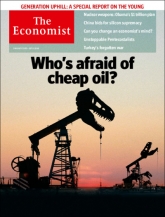
"Big oil firms would then face some existential questions. In the future, should they carry on as before, splurging on expensive vanity projects in hard-to-reach places, at the risk of having "unburnable" reserves as environmental concerns mount? Should they reinvest their profits in profits in shale or in greener technologies? Or should they return profits to shareholders, as some tobacco companies have done, making the beginning of the end of the fossil-fuel era? Whatever they do, the era of oil shocks is far from over."

Extreme Weather Events - Designing Multi-Use Infrastructure
Why Copenhagen Is Building Parks That Can Turn Into Ponds https://t.co/iq7fWuXrmW— Dr.Steven D.Sanders (@DocEngineering) January 24, 2016
Talking About Water System Resiliency
Water resilient cities: how is business building them? https://t.co/gXP1RfM6w0— Dr.Steven D.Sanders (@DocEngineering) January 24, 2016
Managing in the Era of Epochal Economic Challenges
I ordered the new book by economist Mohamed El-Erian - The Only Game in Town: Central Banks Instability, and Avoiding the Next Collapse. From a review in the weekend edition of the Financial Times today:
"El-Erian, chief economic adviser at Allianz and an FT contributing editor, believes it is a mistake to see the current state of global economy as a modestly disappointing equilibrium - "sluggish, but relatively stable", in the version he quotes from the Economist. In reality, we have been incubating an ugly brood of existential challenges: high unemployment and rising inequality; the decay of the system of global economic governance bequeathed by Bretton Woods; the disintegration of trust in national institutions and the growth of political insurgency; and a financial system that is more prone to liquidity illusion and less well anchored to economic reality than ever."
"El-Erian, chief economic adviser at Allianz and an FT contributing editor, believes it is a mistake to see the current state of global economy as a modestly disappointing equilibrium - "sluggish, but relatively stable", in the version he quotes from the Economist. In reality, we have been incubating an ugly brood of existential challenges: high unemployment and rising inequality; the decay of the system of global economic governance bequeathed by Bretton Woods; the disintegration of trust in national institutions and the growth of political insurgency; and a financial system that is more prone to liquidity illusion and less well anchored to economic reality than ever."
Saturday, January 23, 2016
QuakeFinder
Engineering Ethics Blog: Earthquake Prediction Goes Commercial — Sort Of https://t.co/6ApxZNafE9— Dr.Steven D.Sanders (@DocEngineering) January 24, 2016
Friday, January 22, 2016
What Happens When $30 is the New $50?
Oil rout forces companies to delay decisions on $380 billion in projects https://t.co/MKuu3TjAMe via @WSJ
— Dr.Steven D.Sanders (@DocEngineering) January 22, 2016
TotalPave
The Canadian Infrastructure Startup That Just Might Save America's Crumbling Roads https://t.co/48APYZvsgP— Dr.Steven D.Sanders (@DocEngineering) January 22, 2016
What Inspired Me to Be An Engineer
The Dallas Chapter of the Texas Society of Professional Engineers (TSPE) has a contest for Engineer"s Week. I entered the following. Winner will be in the Dallas Morning News.
My early introduction to engineering happened during one of
the grand challenges of engineering – the Apollo space program. The
program demonstrated to all the power and opportunity embedded in creativity and
innovation. We as a nation learned that engineers are the gatekeepers of
creative thought and the designers and builders of tomorrow and the tomorrows
to come. We learned that engineers deal with failure and complexity while
achieving success and significance. We learned the traditions of logic
and reason. We learned that engineers are smart, purposeful, and
driven. We learned that engineers can be stubborn on vision but flexible
in detail. We learned the incredible satisfaction of doing what has not
been done. We learned the societal value of talented engineering teams
working together. We learned that our work is never done and challenges
in the areas of energy from fusion, access to clean water, improving urban
infrastructure, engineering better medicines, and securing cyberspace still
await. And finally we learned that engineers are optimists and being
optimistic is a great thing for the United States and global
community. What I learned was that I wanted to be a part of this
engineering family and community.
Thursday, January 21, 2016
A Paradigm Shift in Personal Mobility
From the always interesting Thoughts column at Arup:
"This is why I think AVs will accelerate the trend towards mobility as a subscription service. An AV subscription should be cheaper than a car lease – most of the costs will be ‘shared’ with other users – and offer the advantage of a choice of vehicles delivered to your door, at a time to suit. If this is possible, then why would you then pay again for a conventional taxi? or take a bus which runs to their timetable not yours?
I’m sure autonomous vehicles will first appear on our roads as the latest must-have gadget and as a status symbol – privately owned by the uber-rich. But, ultimately, AVs as a subscription service could cause a paradigm shift in personal mobility."
Wit and Wisdom #3 Blog
Follow the Top 10 Engineering and Manufacturing Blogs https://t.co/Ay7UYkw9I6 via @hubspot
— Dr.Steven D.Sanders (@DocEngineering) January 22, 2016
University of Texas at Arlington Landfill Project
UTA civil engineers shaping sustainable solutions, increasing energy production at Denton landfill - https://t.co/AEz1a22E6m via @sharethis
— Dr.Steven D.Sanders (@DocEngineering) January 21, 2016
TIME Article on GE Additive Manufacturing
TIME magazine puts spotlight on GE Aviation Additive Manufacturing https://t.co/2foxHrEAQx via @GEAviation
— Dr.Steven D.Sanders (@DocEngineering) January 21, 2016
South Carolina's Christy Hall Takes Big Road Fix and DOT by Storm
South Carolina's Christy Hall Takes Big Road Fix and DOT by Storm: The “1,000-year” flood that wreaked havoc on South Carolina infrastructure last October took many residents and politicians by surprise, but Christy A. Hall spent a career getting ready for it.
Wednesday, January 20, 2016
Engineering in a World of Historic What Ifs
Good column from NYT Tom Friedman today. Many good points and issues to think about.
Engineering Departures - Why GE Moved to Boston
From NewGeography:
"Today, cities are back. The policing revolution—helped by the waning of the crack epidemic—made cities safe again. Core public services were slowly restored, parks were rebuilt, and transit systems were cleaned up and refurbished. Investment started returning. The structure of the economy changed, too. Starting in the 1990s, technology radically transformed the business world and is now a major industry in its own right. The financial industry was deregulated. Globalization drove demand for new types of business services, reinforcing the need to stay on top of a constantly shifting landscape. People with advanced, specialized knowledge are the ones who help companies innovate now. These employees work in highly interactive ways that benefit from clustering together—disproportionately in urban areas like New York, Chicago, and Boston."
"Today, cities are back. The policing revolution—helped by the waning of the crack epidemic—made cities safe again. Core public services were slowly restored, parks were rebuilt, and transit systems were cleaned up and refurbished. Investment started returning. The structure of the economy changed, too. Starting in the 1990s, technology radically transformed the business world and is now a major industry in its own right. The financial industry was deregulated. Globalization drove demand for new types of business services, reinforcing the need to stay on top of a constantly shifting landscape. People with advanced, specialized knowledge are the ones who help companies innovate now. These employees work in highly interactive ways that benefit from clustering together—disproportionately in urban areas like New York, Chicago, and Boston."
Tuesday, January 19, 2016
The Death of Middle-Aged White Women
Middle-aged white death trends update: It’s all about women in the south https://t.co/eUlGd14Qm9
— Dr.Steven D.Sanders (@DocEngineering) January 19, 2016
Theresa O'Donnell - City of Dallas Chief Reslience Officer
Link to the City of Dallas press release.
Monday, January 18, 2016
A Paragraph to Ponder
From Newgeography and the idea of "peak megacities" - -
"Until recently the worldwide trend toward megacities — there were 34 in 2014 — has seemed relentless. But in much of the world this trend is slowing down. The populations of Europe and North America are growing slowly, with the exception of London and Moscow. In the last decade the population of New York City grew at roughly one third the relatively low national rate."
"Until recently the worldwide trend toward megacities — there were 34 in 2014 — has seemed relentless. But in much of the world this trend is slowing down. The populations of Europe and North America are growing slowly, with the exception of London and Moscow. In the last decade the population of New York City grew at roughly one third the relatively low national rate."
GM's Vision of Urban Mobility
GM publishes 'Blue Paper' for sustainable urban mobility https://t.co/sl3qY0YMv4
— Dr.Steven D.Sanders (@DocEngineering) January 18, 2016
Engineering and the Disruption of Legacy Industries
“Introducing The Industrialist’s Dilemma” by @levie https://t.co/vZoFVYhdIy
— Dr.Steven D.Sanders (@DocEngineering) January 18, 2016
Sunday, January 17, 2016
Reducing Congestion by Not Walking
The tube at a standstill: why TfL stopped people walking up the escalators https://t.co/85USIOcGhp
— Dr.Steven D.Sanders (@DocEngineering) January 17, 2016
Moving Toward the Five Cs
Singapore moving towards new five Cs https://t.co/blVLOwdxKk via @sharethis
— Dr.Steven D.Sanders (@DocEngineering) January 17, 2016
What an Oil Supply Bust Looks Like
In the Economist this week - $20 is the new $40:
"It adds that storage at Cushing, Oklahoma, which can hold 73 m barrels, is at record highs of 64 m barrels. Brian Busch of Genscape, an industry data gatherer, says it's a similar story in China, with ships carrying oil spotted waiting to anchor out at sea because storage tanks appeared to be full. Based on the high level of stocks, Mr. Busch thinks it could take up to a year and half before the ber market ends. The only certainty is, the quicker oil price falls, the sooner the day will come."
"It adds that storage at Cushing, Oklahoma, which can hold 73 m barrels, is at record highs of 64 m barrels. Brian Busch of Genscape, an industry data gatherer, says it's a similar story in China, with ships carrying oil spotted waiting to anchor out at sea because storage tanks appeared to be full. Based on the high level of stocks, Mr. Busch thinks it could take up to a year and half before the ber market ends. The only certainty is, the quicker oil price falls, the sooner the day will come."
The Middle East Version of the Water-Energy Nexus
From the current issue of the Economist - Utilities in the Middle East: Sun and Sea:
"The main drawback to making fresh water from the sea is that it takes lots of energy. Around 25% of Jordon's electricity and 10% of Israel's goes on treating and transporting water. Using power from the sun could fill a sizable gap, and make Palestinians less dependent on Israeli power. Renewables supply just 2% of Israel's electricity needs, but the government is committed to increasing that share to 17% by 2030. Jordon, which has long relief on oil supplies from Arab benefactors, is striving for 10% by 2030."
"The main drawback to making fresh water from the sea is that it takes lots of energy. Around 25% of Jordon's electricity and 10% of Israel's goes on treating and transporting water. Using power from the sun could fill a sizable gap, and make Palestinians less dependent on Israeli power. Renewables supply just 2% of Israel's electricity needs, but the government is committed to increasing that share to 17% by 2030. Jordon, which has long relief on oil supplies from Arab benefactors, is striving for 10% by 2030."
Saturday, January 16, 2016
Can Engineers be Robots?
Legal researchers are thinking about the question in the context of lawyers. The issue for all the professions will boil down to what can be automated and what are the core values.
Thinking About the World of Digital Tools
“The 11 digital tools I use every week as Head of Product” by @pbriod https://t.co/mz1YQSsyhI
— Dr.Steven D.Sanders (@DocEngineering) January 16, 2016
Map of the Week
The World According to China https://t.co/JEoZP5Aw2n
— Dr.Steven D.Sanders (@DocEngineering) January 16, 2016
Engineers Working in the Oil Patch
From Paul Krugman. We have never lived through an oil supply bust (i.e., versus a demand bust normally caused by a recession) nor has a oil bust caused a national/global recession. This past week in the stock market highlights the market coming to grips with a great deal of uncertainty.
"But there is, I believe, something else going on: there’s an important nonlinearity in the effects of oil fluctuations. A 10 or 20 percent decline in the price might work in the conventional way. But a 70 percent decline has really drastic effects on producers; they become more, not less, likely to be liquidity-constrained than consumers. Saudi Arabia is forced into drastic austerity policies; highly indebted fracking companies find themselves facing balance-sheet crises.
Or to put it differently: small oil price declines may be expansionary through usual channels, but really big declines set in motion a process of forced deleveraging among producers that can be a significant drag on the world economy, especially with the whole advanced world still in or near a liquidity trap."
"But there is, I believe, something else going on: there’s an important nonlinearity in the effects of oil fluctuations. A 10 or 20 percent decline in the price might work in the conventional way. But a 70 percent decline has really drastic effects on producers; they become more, not less, likely to be liquidity-constrained than consumers. Saudi Arabia is forced into drastic austerity policies; highly indebted fracking companies find themselves facing balance-sheet crises.
Or to put it differently: small oil price declines may be expansionary through usual channels, but really big declines set in motion a process of forced deleveraging among producers that can be a significant drag on the world economy, especially with the whole advanced world still in or near a liquidity trap."
The 21st Century Question for Engineers
The key question that never seems to surface during the recent political debates - - Will the best engineering and STEM brains of this century build new things resembling past innovations (i.e., automobiles, jet aircraft, electricity, etc.) or will they spend all their time making Twitter more user-friendly?
Friday, January 15, 2016
The Coal Cleanup Market
Existing coal plants in the United States - - Cleaning up old coal fired power plants (and frankly anything associated with coal production) might be a great future market for environmental consulting firms and remediation contractors.
Great Artilce on the Automotive Industry in 2030
Disruptive trends that will transform the auto industry https://t.co/EYO5I2zbdE via @sharethis
— Dr.Steven D.Sanders (@DocEngineering) January 15, 2016
Engineering As a Doing (With) Profession
The context of "doing" is in terms of "Doing To", "Doing For", and/or "Doing With." Historically engineering has been much more about the to and for than the with. The current and future issues of engineering need to focus more on the "Doing With" - - where the dominant themes of engineering are centered on combining and collaboration with broad networks of stakeholders on complex interdisciplinary problems. The days of "To and For" isolated experts is long over - - our doing needs to defined more and more in the context of with.
The Future of Supply Chains
Six transitions that will shape the future of Supply Chain - Jane Barrett https://t.co/kECf8McDgy
— Dr.Steven D.Sanders (@DocEngineering) January 15, 2016
Thursday, January 14, 2016
Great Story on Creating the NYC High Line
How the High Line Changed Everything https://t.co/dfM8hKB2ND
— Dr.Steven D.Sanders (@DocEngineering) January 15, 2016
Dams for Electricity
Stop Wasting America’s Hydropower Potential https://t.co/ca4sJBIsIV
— Dr.Steven D.Sanders (@DocEngineering) January 15, 2016
Taking a Picture of a Printer Could Let You Use It to Print | MIT Technology Review
Taking a Picture of a Printer Could Let You Use It to Print | MIT Technology Review: Researchers are exploring how the camera on your smartphone could make it quick and simple to connect to smart gadgets like printers and projectors.
The Power of Real-Time Data
From the Thoughts blog of Arup:
"The power of real-time data is nothing new. Since ancient times having more information has provided a competitive advantage in situations ranging from the battlefield to the stock market.
The future won’t be any different. Real-time data can help cities become more attractive while giving citizens the services they require. Real-time data and connectivity has the potential to be translated into benefits for cities and their citizens, mainly in terms of savings and optimising the usage of a city’s scarce resources.
Real-time (or even close to real-time) data will, if managed appropriately, radically improve accuracy when trying to predict the immediate future or to produce short-term forecasts. This could make usage of scarce resources, like electricity, more efficient."
"The power of real-time data is nothing new. Since ancient times having more information has provided a competitive advantage in situations ranging from the battlefield to the stock market.
The future won’t be any different. Real-time data can help cities become more attractive while giving citizens the services they require. Real-time data and connectivity has the potential to be translated into benefits for cities and their citizens, mainly in terms of savings and optimising the usage of a city’s scarce resources.
Real-time (or even close to real-time) data will, if managed appropriately, radically improve accuracy when trying to predict the immediate future or to produce short-term forecasts. This could make usage of scarce resources, like electricity, more efficient."
The Battery Era
The battery era: A plug for the battery https://t.co/w76ZcTGMHQ via @TheEconomist
— Dr.Steven D.Sanders (@DocEngineering) January 14, 2016
Wednesday, January 13, 2016
ECOncrete Ltd.
Israeli Eco-Friendly Concrete Firm Aims Growth at US Coasts: Two Israeli marine biologists have joined the country’s start-up craze, using $1 million in new investor cash to develop their innovative, environmentally friendly concrete for marine infrastructure and expand their company, ECOncrete Ltd., into the booming U.S. coastal-upgrade market.
Making Fair Park Work
The Physical City Salon: Making Fair Park Work https://t.co/GTQ4raBHoH via @dallasideas
— Dr.Steven D.Sanders (@DocEngineering) January 13, 2016
Tuesday, January 12, 2016
Monday, January 11, 2016
Saturday, January 9, 2016
AR Update for Engineering
Lenovo Unveils First Smartphone With Google's Tango Augmented Reality
https://t.co/lo6LeuSIj1
— Dr.Steven D.Sanders (@DocEngineering) January 9, 2016
Rain Capture and the Decentralization Movement
Utilizing your own gray water and capturing your rainwater on your property is part of what I think will be the decentralization movement. Individual citizens and organizations moving from centralized water resources to decentralized systems. From the Sacramento Bee:
"Los Angeles expects to collect 3.3 billion more gallons a year from projects now under construction. The city eventually plans to capture 20 billion more gallons than the 10 billion it collects during normal years and up to 26 billion gallons during wet years.
Still, many believe more can be done, through projects large and small.
"This is a source of water that has been neglected for far too long," said Peter Gleick, president of the Pacific Institute, which authored a 2014 report with the Natural Resources Defense Council that estimated urban California could capture an additional 630,000 acre-feet of rain a year, roughly enough for 1.2 million households. "It is untapped, and it has enormous potential.""

Read more here: http://www.sacbee.com/latest-news/article53671725.html#storylink=cpy
Powerball and Expected Value
From the Marginal Revolution.
Today’s Powerball lottery offers a prize of $800 million. Is the prize high enough to make it worth playing for an economist? In other words, is the prize high enough to be a net gain in expected value terms? Almost!
The odds of winning are 1 in 292.2 million. So the expected value of a ticket is $800*1/292.2=$2.73. A ticket only costs $2 so that’s a positive expected value purchase! We do have to make a few adjustments, however. The $800 million is paid out over 30 years while the $2 is paid out today. The instant payout is about $496 million so that makes the expected value 496*1/292.2=$1.70. We also have to adjust for the possibility that more than one person wins the prize. If you play variants of your birthday or “lucky” numbers that’s a strong possibility. If you let the computer choose your chances are better but with so many people playing it wouldn’t be surprising if two people had the same number–I give it 25%. So that knocks your winnings down to $372 million in expectation.
Finally the government will take at least 40% of your winnings, leaving you with $223 million in expectation. At a net $223 million the expected value of a $2 ticket is about 75 cents. Thus, a Powerball ticket doesn’t have positive net expected value but the net price of $1.25 is significantly less than the sticker price of $2. $1.25 is not much but to get your money’s worth buy early to extend the pleasure of anticipation.
Friday, January 8, 2016
Thursday, January 7, 2016
Design Thniking and Sex Toys
My first reaction to this story was the commencement address that Intel's famed senior cultural anthropologist Genevieve Bell gave at Cal-Berkley in May 2008 - - "Be Naked As Often As Possible: Anthropological Advice":
"And last but not least, in my anthropological advice giving, I urge you to be honest and brave. For anthropologists this means staying true to the stories we were told in the field, and keeping the details and nuances however inconvenient and contradictory they might be. It also means telling those stories in a way that is open and accessible. I remind my students and my employees that they have a responsibility to get it right - that when someone shares the details of their lives with you - you have a duty to do the right thing with that information. At Intel this means I have fought very hard to give presentations that honored the people whose homes I have visited. I learnt to resist answering questions like - "what are three key takeaways about China". Instead I insisted that you had to know about history, and culture, and politics and perhaps then the right answers would be clearer. It has meant, over the years, that we have haunted Intel with images, photos and stories of the people who would never make it to the corridors of the corporation. We have tried to give them voice. For all of you, I hope that this might mean owning being experts and managing the power it accords you - but with humility nor arrogance. I hope it means asking the hard questions and giving the easy answers. And I hope it means telling complicated stories not delivering sound-bites. But most of all, I hope it means speaking truth to power."
"And last but not least, in my anthropological advice giving, I urge you to be honest and brave. For anthropologists this means staying true to the stories we were told in the field, and keeping the details and nuances however inconvenient and contradictory they might be. It also means telling those stories in a way that is open and accessible. I remind my students and my employees that they have a responsibility to get it right - that when someone shares the details of their lives with you - you have a duty to do the right thing with that information. At Intel this means I have fought very hard to give presentations that honored the people whose homes I have visited. I learnt to resist answering questions like - "what are three key takeaways about China". Instead I insisted that you had to know about history, and culture, and politics and perhaps then the right answers would be clearer. It has meant, over the years, that we have haunted Intel with images, photos and stories of the people who would never make it to the corridors of the corporation. We have tried to give them voice. For all of you, I hope that this might mean owning being experts and managing the power it accords you - but with humility nor arrogance. I hope it means asking the hard questions and giving the easy answers. And I hope it means telling complicated stories not delivering sound-bites. But most of all, I hope it means speaking truth to power."
Best Aircraft Designer In Texas - Ag Tractor
Link - http://newspin360.com/tour/tx/olney/airtractor/
Also check out the Texas Monthly article - Great Planes.
Also check out the Texas Monthly article - Great Planes.
Wednesday, January 6, 2016
Engineering In a World of Augmented Reality
Wall Street Journal
report out today on where we stand on AR. Once AR catches on, it will have a huge impact on engineering, design, O&M, and construction. The future is getting close!!
Change of Use and Infrastructure Design
Good points from the Thoughts blog column at Arup:
"Change of use should become commonplace in the design and planning of infrastructure such as the canal networks. However, it needs more innovative thinking in the design and execution phases if this old infrastructure is to be successfully given a new purpose."
"Change of use should become commonplace in the design and planning of infrastructure such as the canal networks. However, it needs more innovative thinking in the design and execution phases if this old infrastructure is to be successfully given a new purpose."
Tuesday, January 5, 2016
The Politics of Engineering
From the New York Times - - Time to Talk Robots:
"Republicans aren’t the only ones obsessing over reclaiming these factory jobs. Last month, Hillary Clinton mentioned factory closings when she released her own plan to restore manufacturing jobs through a network of tax credits and federal funding for research. Senator Bernie Sanders, meanwhile, in criticizing the Trans-Pacific Partnership, has argued that such international trade deals are to blame for the loss of manufacturing jobs in this country.
The problem with this sort of rhetoric is that a lot of the manufacturing jobs the United States lost over the past 50 years didn’t go overseas; they simply disappeared with the advent of new technology.
James Sherk, a research fellow in labor economics at the Heritage Foundation, said the trend in machines taking over factory work that was previously done by humans has been going on since the 1950s. But for presidential candidates, it’s a lot easier to blame other countries rather than robots.
“It’s those basically rote, repetitive tasks where you’re fixing the same thing,” he said. “It’s very hard to imagine any of those positions coming back. Basically, a robot is a lot more affordable than a human employee.”"
Talking To Your Car
What a new Ford operating system might sound like:
"Owner: “Alexa, ask my Ford for my scheduled car start time.”
Alexa: “Here is the list of your current go times. You have a start time set for Monday at 7 a.m., with a cabin temperature set to 85 degrees Fahrenheit. Tuesday at 5:45 a.m., with a cabin temperature set to 75 degrees Fahrenheit.”
Owner: “Alexa, ask my Ford for my car’s driving range.”
Alexa: “You have an available range of 56 miles.”
From inside the vehicle, a driver would access Alexa through the steering wheel-mounted voice recognition button, allowing the driver to make requests of connected smart devices or functions of Alexa, including weather reports, music, shopping lists and more.
On the move, a driver could ask and receive answers to the following:
“Alexa, is my garage door closed?”“Alexa, turn my porch lights on.”“Alexa, when is my next appointment?”"
Monday, January 4, 2016
2016 Water Industry Trends
Water Industry Market Trends - WaterWorld
https://t.co/xpB9GItadi
— Dr.Steven D.Sanders (@DocEngineering) January 5, 2016
Why Engineers Need to Care About Serendipity
From the New York Times - Where the Fish Swims, Ideas Fly by Paul Bennett, chief creative officer of IDEO:
"Creative people thrive on serendipity, spontaneous interactions, moments of ribald humor, intense debate or just simple eye contact, and I felt as if I was losing myself. I decided that it was time to act. So I tried an experiment. I just stopped saying yes and started saying no to things."
"Creative people thrive on serendipity, spontaneous interactions, moments of ribald humor, intense debate or just simple eye contact, and I felt as if I was losing myself. I decided that it was time to act. So I tried an experiment. I just stopped saying yes and started saying no to things."
Looking Into the STEM Shortage Debate
Noahpinion: Why I hate the "skills shortage" debate https://t.co/vsaSiY7jBF
— Dr.Steven D.Sanders (@DocEngineering) January 5, 2016
The Era of Automated Replenishment Systems
Whirlpool's new smart appliances have Amazon Dash built in https://t.co/8326EnM13Z via @verge
— Dr.Steven D.Sanders (@DocEngineering) January 4, 2016
Infrastructure and Fan Engagement
From the New York Times - Cowboys' Star on the Rise in a Dallas Suburb:
"By sharing a stadium with the school district, the Cowboys will guarantee that many residents will shop, eat and work out at the Star. With office space above the Cowboys’ team headquarters, workers will eat and shop there, too. The hotel, convention space and medical center will attract more visitors. The Cowboys have reached deals with sponsors, including Ford, PepsiCo, Dr Pepper, Nike and Lincoln, to raise additional revenue.
“This will allow people to get a peek under the helmet,” Charlotte Jones said. “We want to maximize fan engagement, to get the touch and feel of the team before they reach their seat.”"
Sunday, January 3, 2016
When Will Urban Planners and Engineers Have VR Tools?
Tarraco VR Launches on Gear VR https://t.co/UkvXgX86Fh via @socializeWP
— Dr.Steven D.Sanders (@DocEngineering) January 4, 2016
What Connected Engineers Do
Communicate
Research
Socialize
Share
Build Communities
Cooperate
Crowdsource
Compete
Trade
Learning From the Middle East
Great blog post from New Geography - What the Midwest can learn from the Middle East





